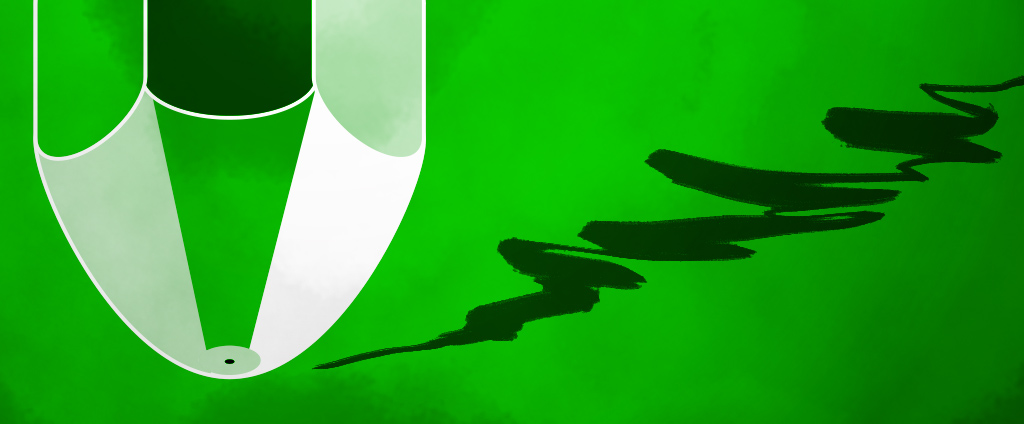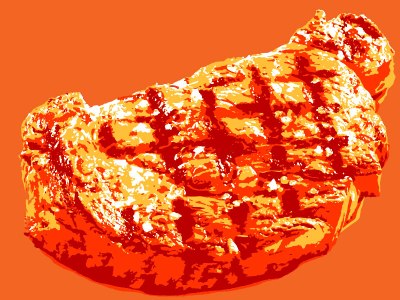Lynn Rothschild has short brown hair and smiley eyes. She cracks jokes about biology and microscopes with ease. Diana Gentry, her decades-younger Ph.D. student, loves classic video games and vegetarian cooking. She lives near Silicon Valley. The two colleagues have a funny banter, and have spent holidays together. But they share one unique goal.
They’re trying to 3D-print wood in space.
The Stanford University researchers have been working long hours honing a three-dimensional printing process to make biomaterials like wood and enamel out of mere clumps of cells. Pundits say such 3D bioprinting has vast potential, and could one day be widely used to transform specially engineered cells into structural beams, food, and human tissue. Rothschild and Gentry don’t only see these laboratory-created materials helping only doctors and Mars voyagers. They also envision their specific research – into so-called “synthetic biomaterials” – changing the way products like good-old-fashioned wooden two-by-fours are made and used by consumers.
 Here’s their plan: Rothschild, an evolutionary biologist who works for NASA and teaches astrobiology at Stanford, and Gentry, her doctoral advisee who is trained in biology and mechanical engineering, are working with $100,000 they received last fall from the space agency’s Innovative Advanced Concept Program. They say they’re on track to prove their concept by October: a three-dimensional printing process that yields arrays of cells that can excrete non-living structural biomaterials like wood, mineral parts of bone and tooth enamel. They’re building a massive database of cells already in nature, refining the process of engineering select cells to make and then excrete (or otherwise deliver) the desired materials, and tweaking hardware that three-dimensionally prints modified cells into arrays that yield the non-living end products.
Here’s their plan: Rothschild, an evolutionary biologist who works for NASA and teaches astrobiology at Stanford, and Gentry, her doctoral advisee who is trained in biology and mechanical engineering, are working with $100,000 they received last fall from the space agency’s Innovative Advanced Concept Program. They say they’re on track to prove their concept by October: a three-dimensional printing process that yields arrays of cells that can excrete non-living structural biomaterials like wood, mineral parts of bone and tooth enamel. They’re building a massive database of cells already in nature, refining the process of engineering select cells to make and then excrete (or otherwise deliver) the desired materials, and tweaking hardware that three-dimensionally prints modified cells into arrays that yield the non-living end products.
In short, your 3D printer could soon be your hardware store, your butcher, and your dentist.
“Cells produce an enormous array of products on the Earth, everything from wool to silk to rubber to cellulose, you name it, not to mention meat and plant products and the things that we eat,” Rothschild said. “Many of these things are excreted (from cells). So you’re not going to take a cow or a sheep or a probably not a silk worm or a tree to Mars. But you might want to have a very fine veneer of either silk or wood. So instead of taking the whole organism and trying to make something, why couldn’t you do this all in a very precise way – which actually may be a better way to do it on Earth as well – so that you’re printing an array of cells that then can secrete or produce these products?”
Rothschild and Gentry’s setup is different from using basic 3D printers that deliver final products. Instead, the NASA-funded researchers are using 3D printing as an enabling technology of sorts. Their setup involves putting cells in a gelling solution with some sort of chemical signaling and support into a piezoelectric print head that spits out cells that form a gel-based 3D pattern.
This team is by no means the only one experimenting with 3D cellular printing. The publicly traded San Francisco company Organovo is using a lower-resolution type of printing to create living tissue for medical research and therapeutic applications. Columbia, Mo.-based firm Modern Meadow is developing processes to 3D print leather and edible meat. A Cornell University team last year unveiled a 3D printed synthetic ear. Academic researchers across the globe have been logging multiple related advancements, including making synthetic spider silk from bacteria.
 Andrew Hessel, a biotechnology analyst who is a distinguished researcher with San Rafael, Calif.-based Autodesk Inc., said the emerging field of 3D bioprinting is a “pretty wide open space” with different researchers “all dancing on multiple fronts at once.” And the research is not without controversy. Information-technology research firm Gartner, Inc. recently predicted 3D printing of living tissue and organs will soon spur a major ethical debate.
Andrew Hessel, a biotechnology analyst who is a distinguished researcher with San Rafael, Calif.-based Autodesk Inc., said the emerging field of 3D bioprinting is a “pretty wide open space” with different researchers “all dancing on multiple fronts at once.” And the research is not without controversy. Information-technology research firm Gartner, Inc. recently predicted 3D printing of living tissue and organs will soon spur a major ethical debate.
Hessel said the most-complex 3D bioprinting research is being done with the actual engineering of cells. Companies like Organovo, for example, aren’t actually engineering the cells, and instead are differentiating and laying them in a way that they can mature and grow in to functional tissue.
Other groups are focused on finding ways to manipulate the print modules so they can manipulate the cells faster and cheaper.
And then, Hessel said, are the researchers like Rothschild and Gentry, “who are really just learning how to manipulate cells to do completely new things.” They are using 3D printers because they are the best way to pick and place specific materials on a growth plate.
Shaochen Chen, a professor in the Department of NanoEngineering at the University of California in San Diego, sees 3D bioprinting having a major impact on the medical community.
 “3D printing was not designed for mass production, like making computer chips,” Chen said. “It was designed for personalized, patient-specific products or customer-specific production. So I think it’s a perfect fit for medical, because everybody’s different, for each disease case is different.”
“3D printing was not designed for mass production, like making computer chips,” Chen said. “It was designed for personalized, patient-specific products or customer-specific production. So I think it’s a perfect fit for medical, because everybody’s different, for each disease case is different.”
Still, full-blown 3D bioprinting is not yet reality. Hessel said researchers are struggling with generating large amounts of bio-based materials in a way where 3D printers can deposit them and really have functional output. Gentry, indeed, said one of her team’s biggest challenges relates to demonstrating and quantifying the actual material yield.
Nonetheless, Gentry is optimistic. She sees their work as not only making structural biomaterials through 3D printing, but making them better.
“If you looked at a piece of plastic, by in large, a small piece of it is just like a large piece of it; this is not true of most biomaterials,” Gentry said. “They have very interesting properties and structures on a micro or sometime molecular scale that stack and create these sort of emergent macro-scale properties. So they behave differently in different directions. We are trying to show that we can manufacture these materials so that those really fine-grained properties work for us.”
She envisions products like wood reinforced with carbon fiber, or equipped with copper nano-wires that change its electrical conductivity, sitting someday on hardware store shelves.
“I want to see if I can add a new class of materials to the palette of materials that people make things out of,” she said.
